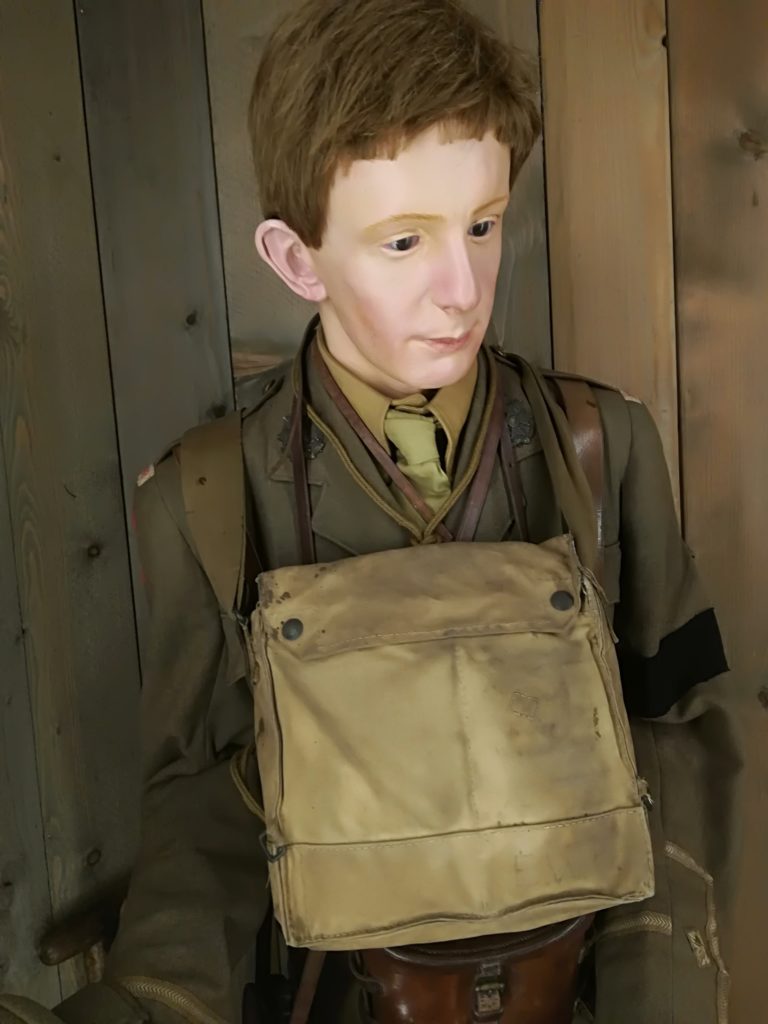On the second day of the year, a crisp, sunny winter’s day, we crossed from Lancashire into Cumbria – destination Carlisle. Any preconceived notions we may have had about visiting this attractive border market town were quickly wiped away by the charm of its historical centre containing both a cathedral and a castle.
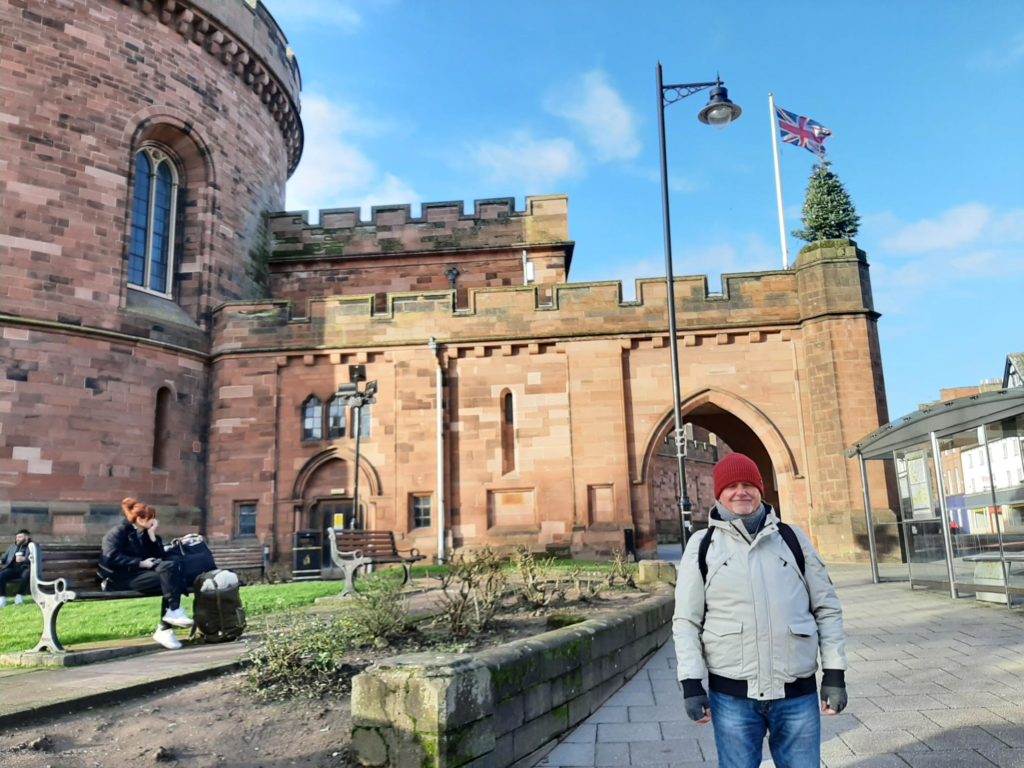
Luckily our visit coincided with the town’s turn to host this magnificently conceived and designed sculpture devoted to raising awareness of knife crime. Created from 100,000 knives collected by Alfie Bradley and the British Ironworks Centre. This is modern art at its best – vibrant, striking, but perhaps, most of all, with a purpose to educate and inform.
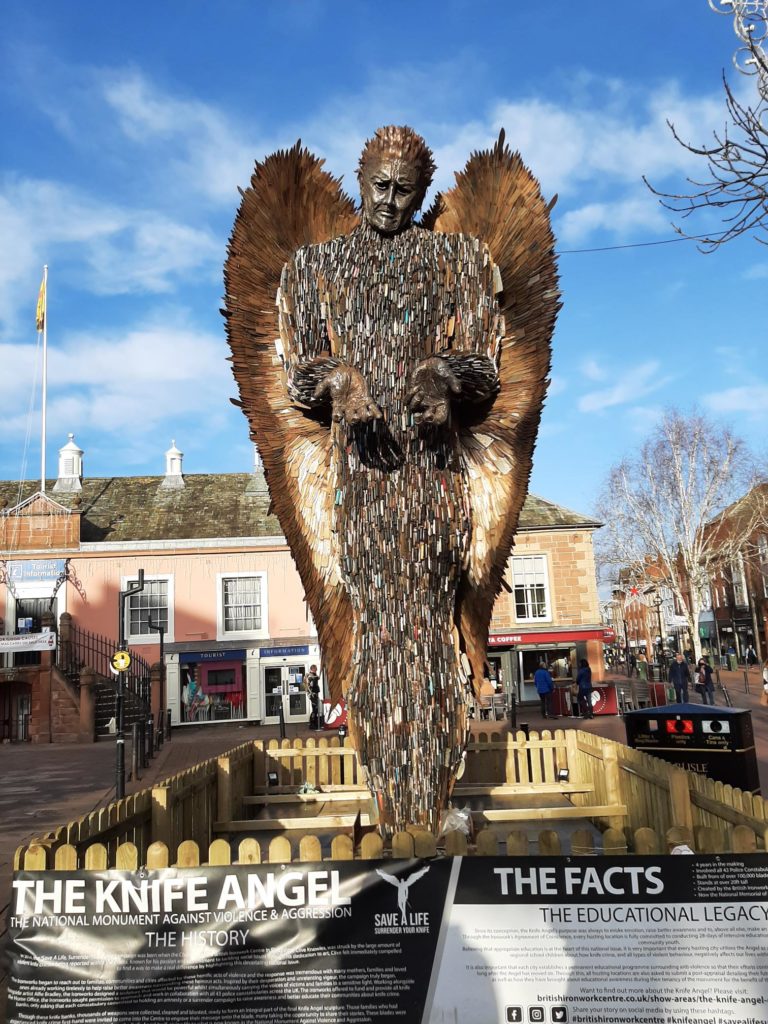
Carlisle cathedral is beautiful. The radiance of the light creates a shimmering effect on the characteristic red brick of the cathedral precinct which contains the impressive former Augustinian priory founded in 1133. Carlisle is the second smallest of England’s select band of ancient cathedrals.
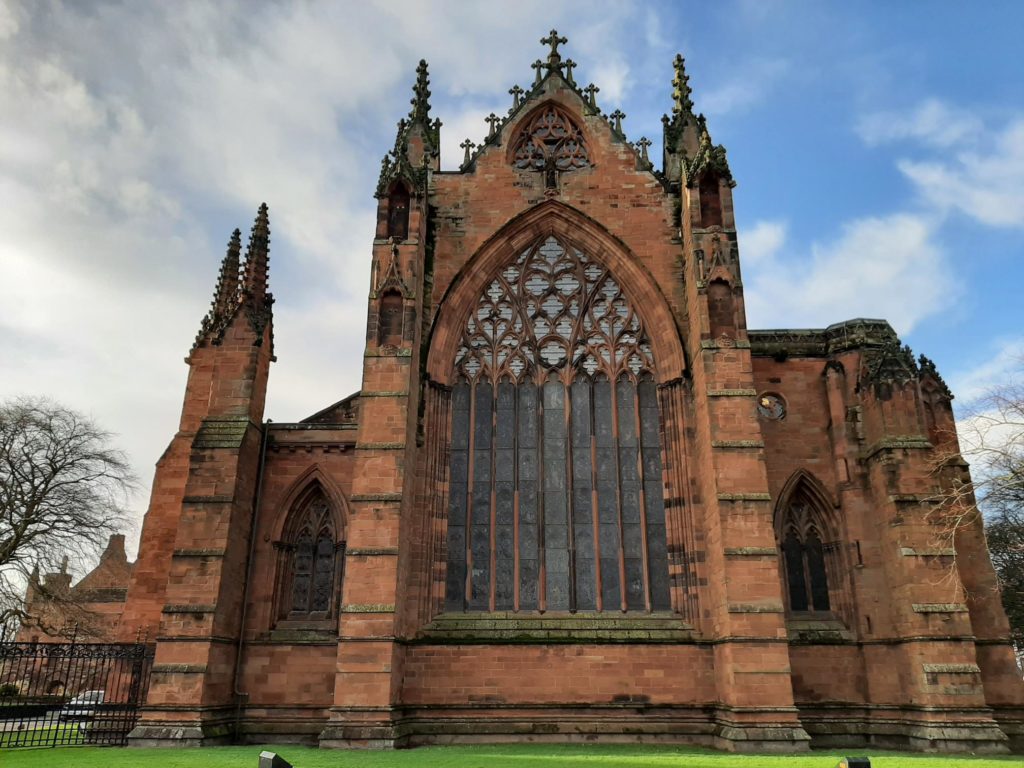
It is the symbiosis of Arabesque ceiling, grandiose Medieval stained glass, the Gothic arches. The nave (below) has it all, and on this particular day with the sunlight penetrating the fenestration, there is a kind of ethereal glow about the place.
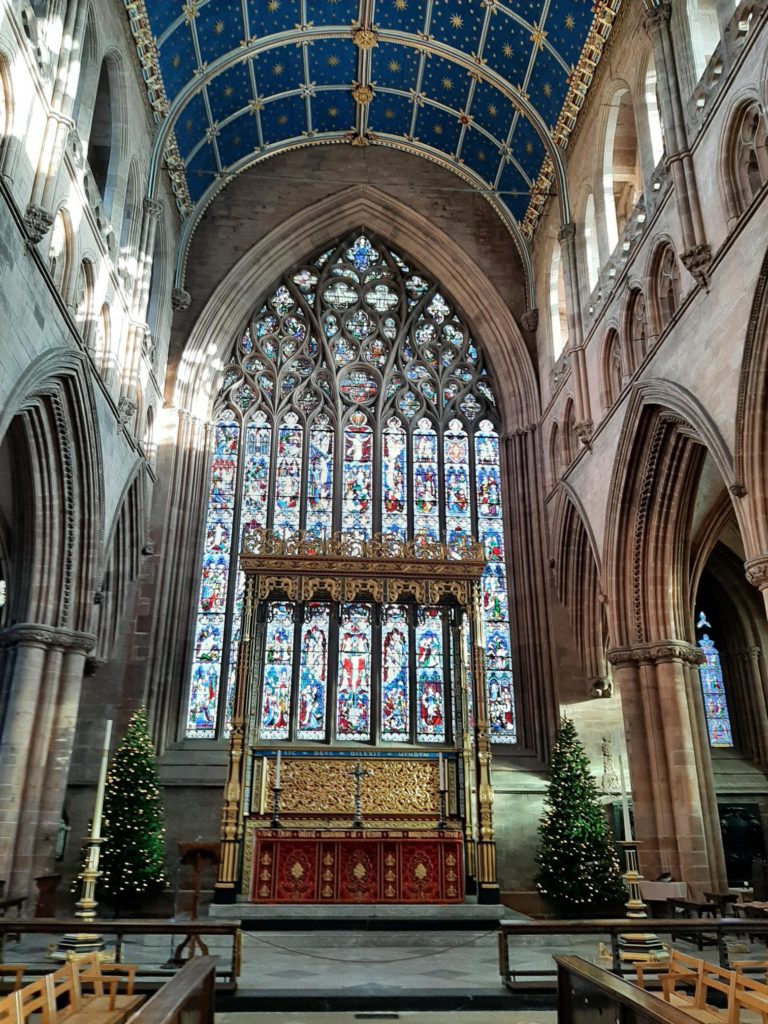
Having visited the cathedral, we headed for the Carlisle castle. The castle is over 900 years old and has been the scene of many historical episodes in British history. Given the proximity of Carlisle to the border between England and Scotland (Mary Queen of Scots was imprisoned there), it has been the centre of many wars and invasions. Its distinctive red brick has an interesting story. Historians think that along with Carlisle’s other major landmark, the cathedral, the Keep was originally built out of Kirklinton stone, but when it was later re-surfaced, supplies of the light grey stone had diminished greatly, so the distinctive St.Bees stone with its vivid red hue was used instead. Below is a visual overview of the Castle bathed in winter sunlight. A view which combines the old (castle) and the new (raised pedestrian walkway), a kind of encapsulation of this town’s vivid identity.
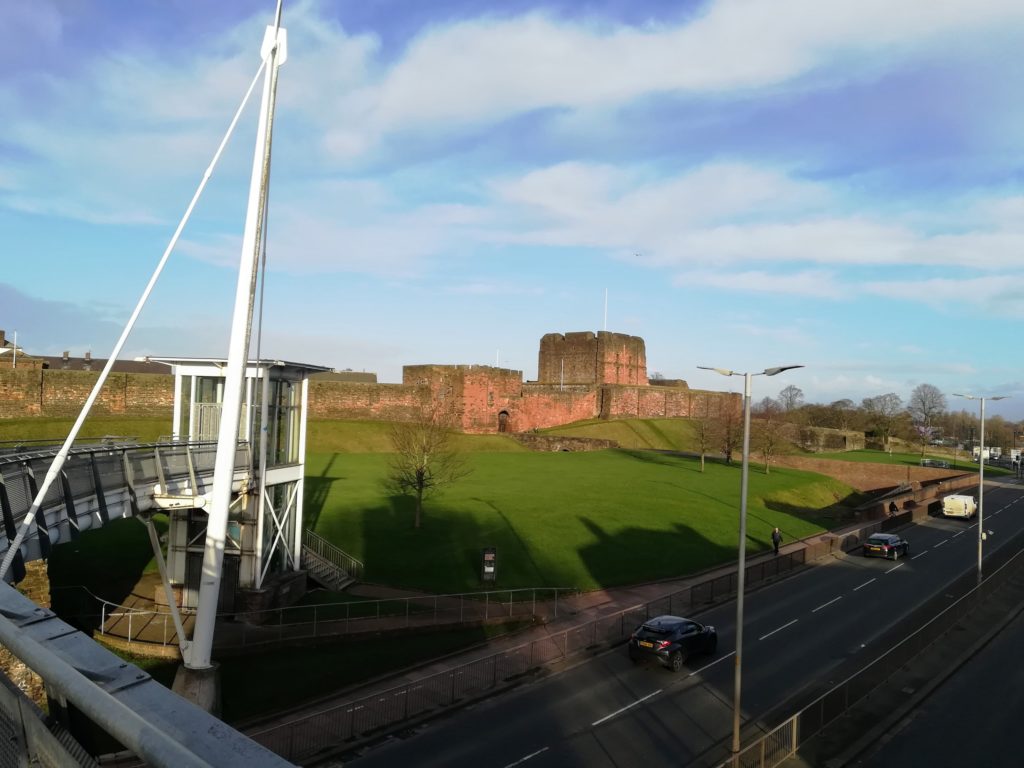
The view below afforded the longbow man protecting the castle from those darned rampaging Scots marauders in their kilts! The ramparts show how difficult it must have been for any rampaging armies to conquer the town and it’s castle. Indeed, the history of Carlisle appears to be a litany of conflict or the preparation for conflict in far-flung places…..

Cumbria’s Museum of Military Life hosted inside the castle walls features an extensive collection of artefacts focusing around the town’s own Border Regiment. A rather life-like figure (below) is shown conveying the pitiless grind and heavy oppression of what it must have been like to experience conflict during WW1.
